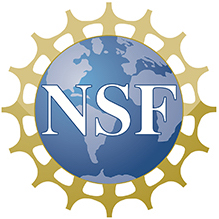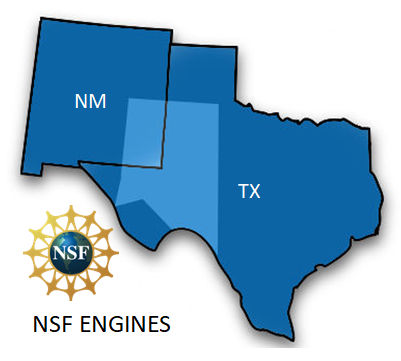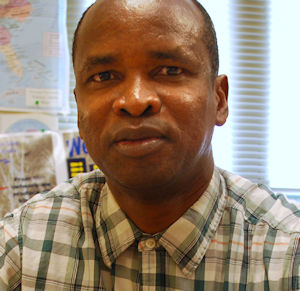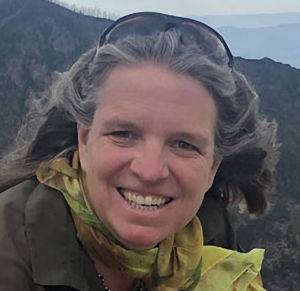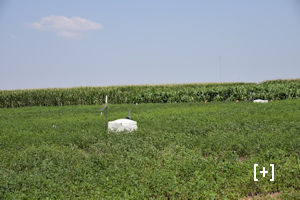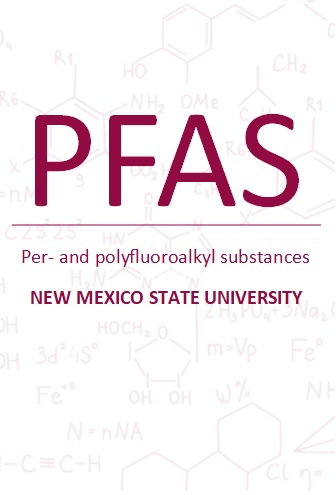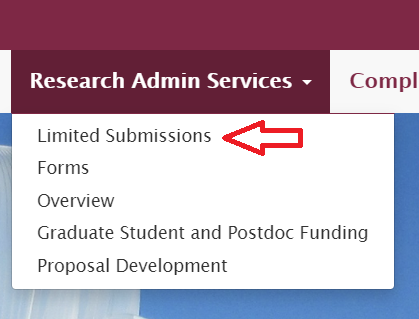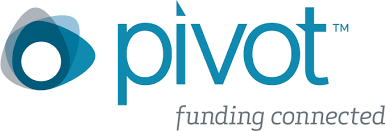 |
|
Vacanza PenséesBy Dr. Luis Cifuentes, Vice President for Research, Creativity, and Strategic Initiatives (RCSI)
I began writing this communiqué while flying across “the pond,” having visited France and Italy with my spouse, Lauren, and dear friends from our time at Texas A&M University (TAMU) in College Station, Texas. While in Paris, we strolled by the Sorbonne, a venerated university dating to the 13th century. In Rome, we drove by Sapienza University, founded in 1303. Both universities are over 700 years old! In their infancy by comparison, TAMU and New Mexico State University (NMSU) are 147 and 135 years old, respectively. It’s exciting to envision what changes NMSU will encounter in the next 500 years! That the academy will change is not new. It has done so dramatically over the past centuries, as reflected by the longevity of European universities. As Harvard University president, Lawrence Bacow says, “higher education will incrementally adapt to changing conditions, as it has historically, maintaining its current mission and structure.” Yet, Bacow’s view of enduring change and growth contrasts what I’ve often heard in my 35 years in the academy, namely that external and internal stakeholders call for universities to be run more like a business when change is heralded. By following a business model, institutions of higher education, particularly State universities, are challenged to adapt to survive. The late Clayton Christensen, a prominent business school professor, “argued that the changes will be of such magnitude that they will disrupt higher education as we know it, rendering traditional models obsolete and driving many colleges and universities to bankruptcy” (Inside Higher Ed). Businesses are perceived to be more efficient, have lower administrative costs, better alignment of resources with mission, etc. Universities are borrowing more and more businesses practices, such as innovation, risk-taking, being customer-centric, adapting, and diversifying. But universities are not businesses. And, in many ways this is a good thing as most businesses are not run well, with only less than one percent of all companies lasting 100 years. This tenure is a far cry from the 700+ year existence of the earliest universities. Moreover, there is a significant risk that while focused on becoming more like businesses, universities will lose their raison d’etre to contribute to the social good. By embracing a university mission to enhance the social good, as Jim Collins states in his book Good to Great and the Social Sectors: Why Business Thinking is Not the Answer: “We must reject the idea—well-intentioned, but dead wrong—that the primary path to greatness in the social sectors is to become ‘more like a business.’ Most businesses—like most of anything else in life—fall somewhere between mediocre and good. Few are great.” So, how should universities prepare to face and embrace change? According to a 2018 Deloitte Insights report, public higher education in the U.S. will maintain mission and vision as they navigate change by following one or more “futures” or models. These include:
The report also analyzed 565 state institutions’ publicly available strategic plans to get insight into the direction colleges and universities claim to be headed. For doctoral institutions like NMSU, enrollment growth and research, i.e., LEADS 2025 goals 1 and 2, are top priorities. We are in line with most public universities, now NMSU must find the path to prolonged existence. Will NMSU last a few more centuries? I believe so. In Will Universities Survive the 21st Century?, Alan Ruby, senior fellow at the University of Pennsylvania maintains that “conservative” institutions, those which create, protect, and transmit knowledge across generations, and institutions with a clear public purpose will persist. As change take place, and it will continue to do so at NMSU, every one of us must ring a loud bell each time we lose sight of what we are here to do. |
|
Animal Care and Use Program
By Dr. JoAnne Dupre, Director, Compliance Administration, RICUnits that work with live animals in research and teaching are familiar with the semi-annual inspections of the animals, facilities, and records. The NMSU Office of Research Integrity and Compliance (RIC) assists the NMSU Institutional Animal Care and Use Committee (IACUC) by supporting training, occupational health assessments, contingency planning, and help with using Streamlyne for approval of IACUC protocols. To prepare for IACUC inspections, RIC reminds animal handlers to maintain up-to-date copies of these records:
Finally, in all areas where animals are housed, post signage with instructions for reporting concerns about animals or animal care. Suggested wording is available on the IACUC webpage. For questions and assistance with any animal processes, please contact the Office of Research Integrity and Compliance, by phone 575-646-7177 or email ric_admin@nmsu.edu. |
|
Participate! Your Voice is Needed in Research Development
By Dr. Tanner Schaub, Assistant Vice President for ResearchNMSU has a number of exceptional research enterprise developments on the front burner, and we need the voices of our faculty leaders to develop the identities and functionalities of these initiatives for maximum benefit to our research community. Please step up for one or more of these roles:
|
|
NMSU Regional Partnership Semi-Finalist in Type 2 NSF Engines Proposal
By Dr. Hamid Mansouri Rad, Senior Proposal Development Specialist, RASNMSU's partnership on a large regional proposal among NSF Regional Innovation Engines semi-finalists. Other partners on this "Type 2" effort are the University of New Mexico (Lead institution), University of Texas at El Paso, New Mexico Institute of Mining and Technology, Navajo Technical University, Los Alamos National Laboratories, and Sandia National Laboratory. The goal of this project is to collectively advance discovery and application in the areas of climate change resilience, water, and clean energy. The NSF "Engines" program aims to positively impact economy within geographic regions, addressing societal challenges, and advancing national competitiveness. In the next phase of this selection, NSF will interview each team to evaluate their leadership capacity in mobilizing efforts in the next two years, their competitive advantages, and their resources to accomplish proposed tasks. NMSU investigators on this collaborative effort include Ms. Patricia Knighten (Director of Innovation Commercialization, Arrowhead Center), Drs. Lara Prihodko (associate professor of animal and range sciences), and Jay Misra (Associate Dean for Research, College of Engineering and professor of computer science). |
NSF ENGINES |
NMSU Partnership Receives "NSF Engines" Seed FundingBy Dr. Patricia Sullivan, Director, Office of Strategic InitiativesNMSU Office of Strategic Initiatives led a partnership with a newly awarded NSF Innovation Engine program, which was led by University of Texas at Austin and involved a team of 12 academic and national laboratory partners. The Type I Innovation Engine was awarded $1M in seed funding to lay the groundwork for a new regional innovation engine in the Permian Basin of Texas and New Mexico. This two-year award, known as the “NSF Engines Development Award: Advancing energy and resilience technologies in the Permian Basin (TX, NM),” is the first step toward a possible ten-year, $160M NSF investment to implement the engine. The Permian Basin based-program will leverage the region’s considerable energy infrastructure and expertise — developed through decades of producing energy on a globally significant scale — to support research, development and commercialization of advanced energy solutions and technologies. The Regional Innovation Engines Development Award will support collaboration among community members and energy experts from the public and private sectors to develop a regional engine for advancing energy innovation. This framework will ultimately inform other oil- and gas-dependent regions to foster an energy future that is safe, reliable, affordable, clean and fair. |
|
Recognizing Large Proposal Submitters (May 2023)By Dr. Hamid Mansouri Rad, Senior Proposal Development Specialist, RASCongratulations to Drs. Soum Sanogo, Wiebke Boeing, and Graciela Unguez for each submitting a proposal exceeding a million dollars in the month of May. |
|
|
Dr. Soum Sanogo, professor of Entomology, Plant Pathology, and Weed Science at NMSU, led a $6.2 million to the USDA NIFA Specialty Crop Research Initiative. The goal of this proposal is to develop a system-based approach to reduce the risk of Phytophthora blight, a serious pathogen in vegetable crops worldwide. This effort involves the collaboration of researchers at multiple institutions including the University of Illinois, Alcorn State University, University of Florida, University of Arizona, Texas A&M University, at Rutgers. For more information, please contact Dr. Sanogo at ssanogo@nmsu.edu. |
Dr. Soum Sanogo, NMSU |
|
Professor of Biology Dr. Graciela Unguez led a $2.9 million proposal to National Institute of Heath’s Undergraduate Research Initiative for Student Enhancement (U-RISE) program to help enhance the diversity of leaders in biomedical sciences in the US. The proposed ground-up U-RISE program plans to create an inclusive environment that provides students with various crucial training including critical thinking laboratory skills, and offers support in relevant professional proficiencies. The program aims to intentionally create a community of NMSU scholar/mentors from diverse cultural and academic backgrounds along with diverse staff to create an equitable, inclusive, and diverse program to graduate the future biomedical scholars. This proposal was an NMSU-wide effort that garners the support of the Colleges of Agricultural Consumer and Environmental Sciences; Arts and Sciences; Engineering; and Health Education and Social Transformation. For more information, please contact Dr. Unguez at gunguez@nmsu.edu. |
Dr. Graciela Unguez |
|
Dr. Wiebke Boeing, Professor of Fish, Wildlife and Conservation Ecology, submitted a $2.5 million to Department of Energy’s Reducing Agricultural Carbon Intensity and Protecting Algal Crops program with the goal of addressing challenges impacting algae production. More specifically, this proposal aims to improve algae production and stability by growing algae polycultures making them more resistant to invasion by new algal competitors and environmental changes. NMSU collaborators on this project include Dr. Alina Corcoran, affiliated faculty in the Molecular Biology Interdisciplinary and Life Sciences Graduate Program. This proposal is also the result of the collaboration with researchers at Los Alamos National Labs, the Santa Fe Community College, and Bigelow Laboratories for Ocean Sciences. For more information, please contact Dr. Boeing at wboeing@nmsu.edu.
|
Dr. Wiebke Boeing, NMSU |
Guar Crop Response to Fertility and Irrigation Strategies
By Dr. Abdel Mesbah, Research Director, Clovis Agricultural Science Center
Stress-tolerant, low water, and input-requiring alternative crops are needed to sustain productive agriculture and rural economy under the declining Ogallala Aquifer the eastern part of New Mexico. Guar is one such desert-adapted, multi-use, leguminous crop for the region. Previous studies have shown that gaur is relatively irresponsive to the application of fertilizers alone. There is a need to improve productivity and resource use efficiency of guar to increase acceptance by farmers. A current study at the Clovis Agricultural Science Center is assessing the improvement of water availability by storing it in the soil profile or applying it during the growing on guar response to nitrogen, phosphorus, and potassium levels in improving yield, forage productivity, and quality in the eastern part of the state. |
|
PFAS Research at NMSU
By Dr. Robert Young, Director, Chemical Analysis and Instrumentation Laboratory (CAIL)Per- and polyfluoroalkyl substances (PFAS) are a group of synthetic chemicals that have been in use since the 1940s. The U.S. Environmental Protection Agency (EPA) currently lists 112 structure-based PFAS chemical classes, and 14,735 individual PFAS chemicals. PFAS are found in a wide range of consumer and industrial products, including water and stain resistant fabrics and carpets, cosmetics, paints, food packaging materials, nonstick cookware, circuit boards, and firefighting foams. They are highly persistent, and nearly ubiquitous in surface waters, which are the primary source of U.S. drinking water. In addition, adverse health effects from PFAS exposure have been reported, including reduced immune response, altered metabolism and fetal development, and increased risk of some cancers. As a result, the U.S. EPA recently issued national drinking water standards for 6 PFAS known to occur in drinking water. Firefighting foams, including from military training facilities, are an important PFAS source in NM and globally, but PFAS have also been released from wastewater treatment plants and other industrial, municipal, and domestic sources, and with atmospheric transport, PFAS have been found as far as the Himalayas, Arctic, and Antarctic. Researchers at NMSU in the Chemical Analysis and Instrumentation Laboratory (CAIL) and the Departments of Civil Engineering (CE), Plant and Environmental Sciences (PES), and Public Health Sciences (PHS), including Drs. Pei Xu, K.C. Carroll, Jagdish Khubchandani, Yanyan Zhang, Huiyao Wang, Omar Holguin, Runwei Li, Zachary Stoll, and Robert Young, are engaged in projects to detect, identify, and treat PFAS chemicals in surface waters, groundwaters, precipitation, and soils. Their collaborations include the U.S. Geological Survey, the Brackish Groundwater National Desalination Research Facility (BGNDRF) of the U.S. Bureau of Reclamation, the University of Arizona, Pacific Northwest National Laboratory, the National High Magnetic Field Laboratory, and the Commonwealth Scientific and Industrial Research Organisation (CSIRO), Australia’s national science agency. NMSU researchers have infrastructure and methods developed for PFAS sampling and chemical analysis at low part-per-trillion concentrations. CAIL offers a range of analytical instruments to support these efforts, including a liquid chromatography-high resolution Orbitrap Fusion Tribrid mass spectrometer for nontargeted PFAS analysis, a Shimadzu LC-MS 8050 triple quadrupole mass spectrometer for targeted, quantitative PFAS analysis, and an Agilent gas chromatography-mass spectrometer for volatile PFAS analysis. CAIL also offers support for analytical method development, sample preparation, and data analysis, and preliminary data acquisition for proposal development. In addition, the NMSU land-grant agriculture programs have the animal, plant, soil, dust, and air sampling expertise needed for PFAS quantification and characterization, and NMSU’s Agriculture Science Centers can also support PFAS characterization and source evaluation (e.g., Clovis Center is located in a PFAS contaminated groundwater area). Through these efforts, NMSU is poised to become a leader in this emerging research area.
|
|
Limited Submission Funding OpportunitiesBy Dr. Hamid Mansouri Rad, Senior Proposal Development Specialist, RASResearch Administration Services maintains a list of limited submission funding opportunities for NMSU research community. The list is accessible through a link on the Research website, through the Research Administration tab. NMSU users can also access the list directly on SharePoint. We encourage NMSU researchers to periodically visit the site and if they are interested in any of the opportunities to please inform us by sending email to ras@nmsu.edu. |
|
Pivot Funding Opportunity DatabaseBy Dr. Hamid Mansouri Rad, Senior Proposal Development Specialist, RASThis is a reminder that in order to assist NMSU faculty and staff in locating external funding opportunities, the RCSI has purchased a subscription to ProQuest’s Pivot available at https://pivot.proquest.com/session/login. Choose New Mexico State University from the Institution drop down menu. You will be prompted to log in using your NMSU username and password. Follow the process for NMSU's 2-Factor Authentication (2FA). To request a one-on-one or group Pivot training, send email to hamid@nmsu.edu. |
|
|
Graduate School |
|
|
No significant news. For information about NMSU Graduate School visit: https://gradschool.nmsu.edu/. |
|
Questions and comments regarding NMSU’s Research Digest should be directed to Hamid Mansouri Rad, Ph.D. at hamid@nmsu.edu, (575) 646-6429. |
|



